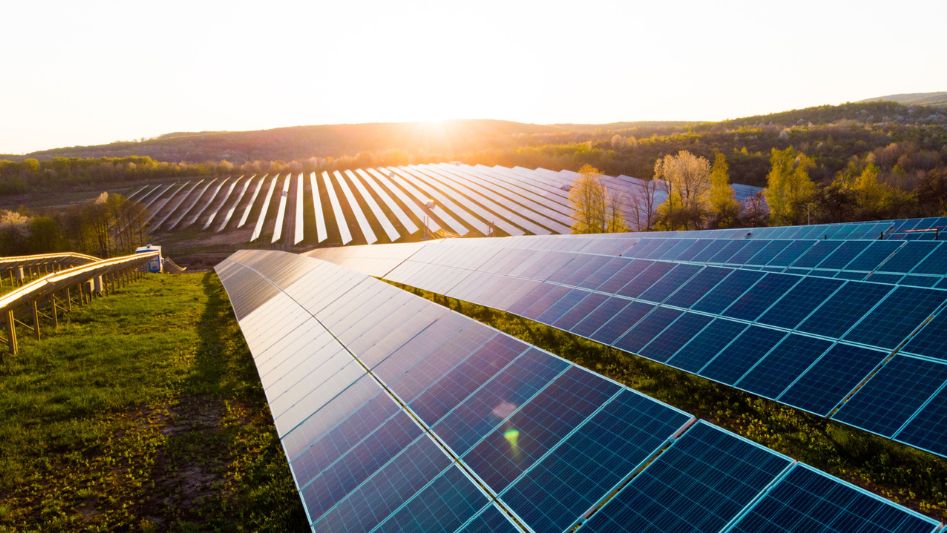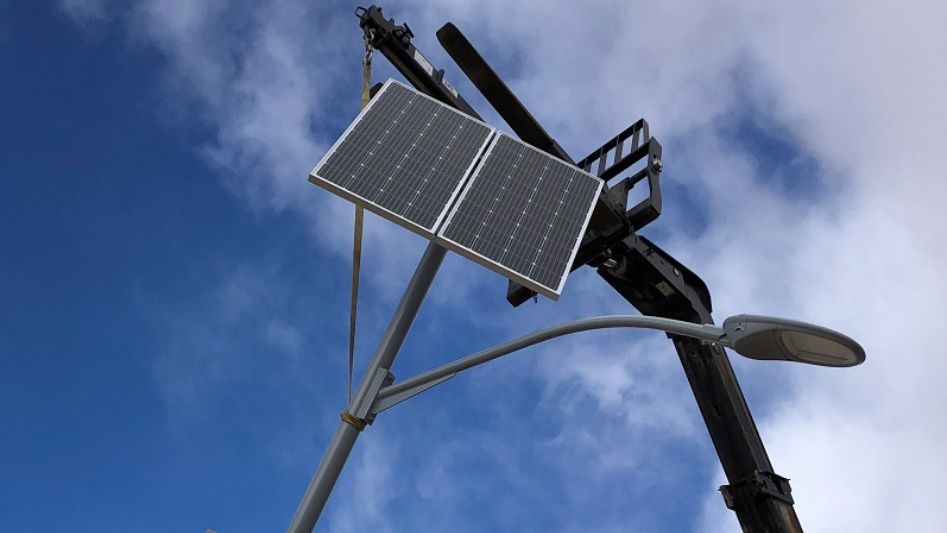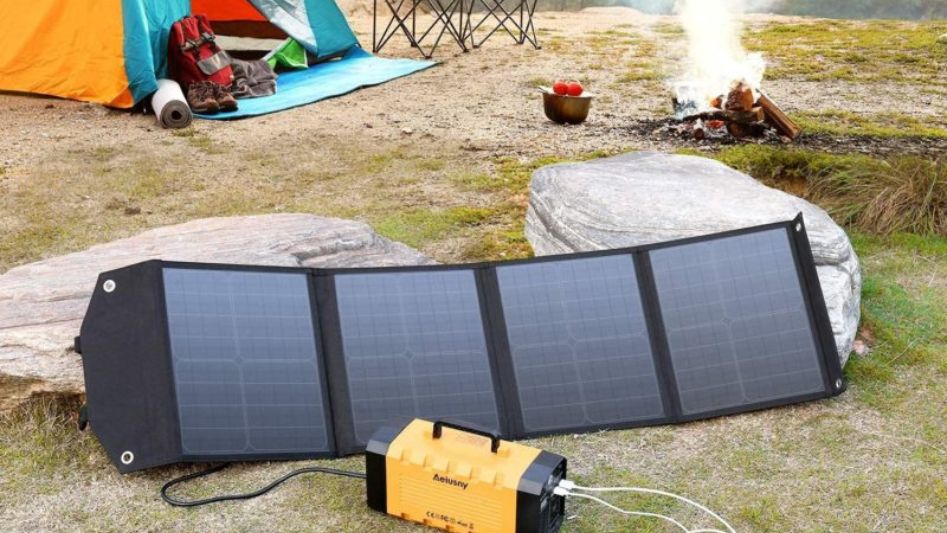Solar and Storage can provide emergency responders freedom to focus on providing critical services and not worry about where their backup power will come from. Learn How solar and storage provide power for emergency operations in this article.
Table Of Content
- Introduction
- Stationary solar and storage for fire stations in Puerto Rico
- Mobile solar and storage for disaster relief in Louisiana
- Deploying resilient power in your community
- Conclusion
- FAQ
- You May Also Like
- External Links
“We value [solar and storage] tremendously.Something that wasn’t necessary for us to worry about is now out of the way. We shouldn’t have to worry about losing power in a crisis. Our daily routines are simplified greatly because of it. You may rest assured that your electricity will still be on when you return after responding to an emergency. Sergeant Luis Saez of the Guánica Fire Station in Puerto Rico
In the event of a power outage, whether caused by a malfunction in the electrical grid or a natural disaster, first responders are the ones that rush in to provide necessities like food, shelter, fire protection, and medical care. They shouldn’t have to worry about losing power, but many people don’t have access to backup generators in the event of a blackout.

In the event of a blackout, solar PV systems combined with battery storage (solar + storage) can provide clean and reliable power.Mobile units, which can be transferred to other locations on a trailer, and stationary systems, which are put in a single location, have both proven useful to first responders in recent years in the case of a natural disaster that causes widespread power outages.
These days, however, diesel generators—which are notoriously unreliable, costly, and susceptible to fuel shortages—are the standard for providing backup power in most essential institutions. When diesel engines are used, harmful pollutants are released into the atmosphere, which have a detrimental effect on both the environment and human health. In reality, there is a correlation between power outages and increases in carbon monoxide poisoning caused by generators powered by fossil fuels. As an alternative, solar plus storage can deliver clean, reliable, continuous power that is both autonomous and uninterruptible. When combined with a battery storage system, solar energy can reduce utility bills even when the grid is functioning normally, offering an alternative to diesel power.
Solar-plus-storage systems offer immeasurable resilience for emergency responders, allowing them to focus on saving lives rather than worrying about where their backup power would come from in the event of a power outage.
Two examples of solar+storage systems being put to use in emergency response are presented here: a permanently installed system at a fire station in Puerto Rico and a solar+storage trailer being put to use by first responders in Louisiana.
Stationary solar and storage for fire stations in Puerto Rico
Puerto Rico’s quick solar and storage growth came to the fore after the island was hit by a series of hurricanes and went dark for an entire year. Residents still face weekly, multi-hour grid-related power outages despite years of neglect and underinvestment in the electricity grid in the face of growing severe weather events. These interruptions are annoying, but they pale in comparison to the hazards posed by extended blackouts caused by hurricanes or strong earthquakes, both of which are happening more frequently.
Fire Station Culebra on the island of Culebra lost power for more than a year after Hurricane Maria. However, it was challenging to transport diesel from the mainland of Puerto Rico to the island, so the fire station had to keep running as best it could without reliable power. For emergency personnel in rural areas, the situation at Fire Station Culebra is all too familiar.
Many local emergency service providers are turning to solar and storage for resilient power as a response to grid disruptions. The nonprofit organisation Solar Responders’ goal is to install solar panels and battery storage systems at each of Puerto Rico’s 96 fire stations. Over 2,000 hours of backup power have been provided by the eight stations that have implemented solar and storage so far.
Because of the solar and storage systems’ reliability, resilience, and renewable power, fire stations can keep running and provide residents with charging stations for essential electronics like cell phones and medical equipment even when the entire island loses power, as happened in April 2022 after a major power plant fire. “It had no effect on us at all,” Sergeant Saez of Fire Station Guánica stated of the power loss. People coming to use the station’s charging stations and refrigerators to keep their medications and food fresh were the only indication that the grid was down.
Because of the 20.8 kW of solar on the roof of Fire Station Guánica, the batteries were never less than 80% charged, even while the electricity was off for four days in April. In case of power outages, each fire station has a diesel generator installed for backup purposes. The station can continue to offer free charging services to the neighbourhood even when the electricity goes out, thanks to the solar and storage combination.
Many locals have their own fossil fuel generators to deal with the regular blackouts, but they are very costly to operate. Saez notes that, “during lengthier outages, people will come in after the first day because of the cost of gas; they don’t want to have to acquire more gas for their generators.”

Mobile solar and storage for disaster relief in Louisiana
Severe weather is nothing new for residents of Louisiana. Thousands of people in New Orleans and the surrounding area were left without electricity and access to basic needs for weeks after recent disasters, including Hurricane Ida in 2021 and a tornado in 2022. (or longer). Individuals most at risk during blackouts are the elderly, young children, and the sick; those who rely on life-saving medical devices that require electricity or require refrigeration for medication often find themselves in danger when an outage occurs. Because of the inability to rely on backup power, community centres and health clinics had to close during outages, forcing the elderly and those with access and functional requirements (those who require assistance due to any condition that impairs their ability to act) to look elsewhere for assistance.
The Arabi neighbourhood, which is situated between Chalmette and the Lower Ninth Ward in New Orleans, was completely wiped out by the recent EF-3 tornado that touched down in the city in March 2022. There were reports of widespread blackouts, and several people had their homes destroyed.
To help Arabi and the surrounding area “#BuildBackGreener” after natural disasters by providing cleaner energy to communities in crisis, Together New Orleans, a coalition of congregations and community-based organisations in the greater New Orleans area, partnered with Footprint Project to rapidly deploy a mobile solar and storage trailer.
The solar+storage trailer’s PO-Box charging units (tiny individual containers with locks that house or charge portable chargers) made it a charging station for both emergency responders and homeowners.Residents may borrow a charger for the day and then bring it back to be recharged when they are done using it. The Red Cross and other volunteer organisations plugged their computers and printers into the trailer’s generator. The mobile solar and storage trailer allows Together to use phones, laptops, and tablets to record the requirements of the locals in the field and then coordinate support accordingly, allowing Together New Orleans to perform their response initiative in real-time, on the ground.
“[The solar and storage trailer] kept people connected,” said LaKenya Roberson, an organiser with Together New Orleans. People were able to share information and feel more secure since they knew where and when aid would be provided.
Deploying resilient power in your community
It should go without saying that first responders require robust, reliable power to continue providing life-saving medical attention, fire response, and other services to their communities during grid-related and disaster-related outages. Safer, cleaner, and more reliable than fossil fuel-powered generators, solar power and storage can be put in stationary systems at strategic locations like fire stations or in mobile units that can be quickly deployed to crisis sites.
Unlike a diesel generator, which sits idle for long periods of time, solar+storage has the potential to produce electricity, improve public health, and generate economic benefits around the clock.First responders and disaster management officials have also noted that solar plus storage is noticeably quieter than diesel.
Fayette County, Texas’ Chief of Emergency Management and Homeland Security, Craig Moreau, remarked on his experience with mobile solar + storage in a recent Clean Energy Group webinar, Mobile Solar + Storage for Emergency Management: “I’m very impressed with the charge [solar + storage] can hold; even if we need to deploy in the middle of the night, I can run what we need to run for a pretty significant amount of time.” In addition, he stressed the significance of the noise-free operation of solar and storage systems.
Numerous municipalities, aided by their non-profit allies, are beginning to reap the benefits of solar and storage. In order to aid in emergency situations, groups like Footprint Project, Together New Orleans, and Solar Responders are providing solar panels and batteries to essential services. Funding for feasibility evaluations to determine whether or not a solar and storage project at a key community facility is technically and economically feasible can be obtained through programmes like Clean Energy Group’s Technical Assistance Fund (TAF). In fact, TAF funding went toward helping both Solar Responders and the Footprint Project create fixed and mobile solar and storage systems.
Secretary of Commerce Gina M. Raimondo said, “Early preparedness and recognising your risk are crucial to being hurricane resilient and climate-ready,” after the National Oceanic and Atmospheric Administration (NOAA) announced an above-average hurricane season for the Atlantic. A combination of solar panels and battery storage would be a great beginning.
Conclusion
Numerous municipalities, aided by their non-profit allies, are beginning to reap the benefits of solar and storage. In order to aid in emergency situations, groups like Footprint Project, Together New Orleans, and Solar Responders are providing solar panels and batteries to essential services. Funding for feasibility evaluations to determine whether or not a solar and storage project at a key community facility is technically and economically feasible can be obtained through programmes like Clean Energy Group’s Technical Assistance Fund (TAF). In fact, TAF funding went toward helping both Solar Responders and the Footprint Project create fixed and mobile solar and storage systems.

FAQs
What is solar toughness?
This means that solar panels can be installed on individual buildings to provide all or part of the energy needs of those structures. Communities can build a microgrid with solar, storage, and other technologies to power essential facilities at peak times.
Why it is critical to use renewable energy sources?
This is because problems in one part of the world are less likely to have a significant impact on a region’s energy infrastructure that is under local control.
Can you name the four most common forms of solar power?
Getting energy from the sun without actively doing anything Thermic Sun (for heating) Sunlight-focusing technology (for electricity) Solar PV (photovoltaics) (electricity)
You May Also Like
- SOLAR POWER INVESTMENT FOR FARMING & AGRICULTURE IN RURAL COMMUNITIES
- SOLAR BOTANIC TREES: ARE THEY THE FUTURE OF EVS CHARGING STATIONS?
- WHAT IS BLOCKING THE TRANSITION TO GREEN ENERGY?
- TOP COUNTRIES WITH HIGHEST PROPORTION OF RENEWABLE ENERGY
- TOP 3 USES OF ENERGY IN OUR DAILY LIVES
